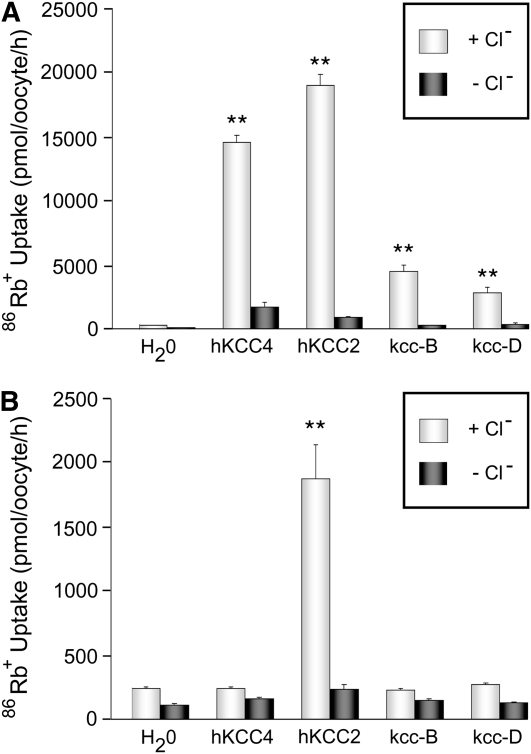Figure 1.—
Drosophila kcc mediates K+–Cl− cotransport when expressed in Xenopus oocytes. (A) Xenopus oocytes microinjected with kcc-B, kcc-D, or control (human KCC2 or KCC4) cRNA all demonstrate uptake of 86Rb+ (a congener of K+) under hypotonic conditions. This 86Rb+ uptake is Cl−-dependent as it is observed in the presence (+Cl−, lightly shaded bars), but not in the absence (−Cl−, dark-shaded bars), of extracellular Cl−. Control oocytes microinjected with H20 (left) showed no Cl−-dependent uptake of 86Rb+ under hypotonic conditions. (**) P < 0.0001 vs. water-injected control oocytes. (B) Xenopus oocytes microinjected with neither the kcc-B nor the kcc-D cRNA displayed uptake of 86Rb+ under isotonic conditions that was significantly higher in the presence of Cl− (+Cl−, light-gray bar) than in its absence (−Cl−, dark-shaded bar). Control oocytes microinjected with either H20 or human KCC4 cRNA also showed no Cl−-dependent uptake of 86Rb+. In contrast, Xenopus oocytes microinjected with cRNA for human KCC2 demonstrate a robust Cl−-dependent uptake of 86Rb+ under isotonic conditions. (**) P < 0.0001 vs. water-injected control oocytes

